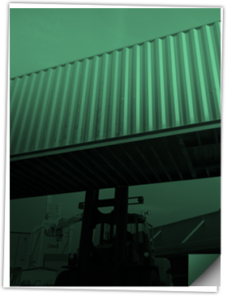Featured Headlines:
An Outstanding ACE Refunds Report
Full Houses and Chassis Are Wild
It's the Heat...Not the Humidity
CTPAT on the Back for CBP
- US Customs and Border Protection (CBP) hosted the 2022 Trade Facilitation and Cargo Security Summit in Anaheim, California from July 18th-20th. This year, CBP combined its annual Trade Symposium and Customs-Trade Partnership Against Terrorism (CTPAT) conference into a single, three-day event—jampacked with key industry speakers, panel discussions, workshops, and more.
- During the event, CBP outlined (6) six new requirements regarding forced labor for Tier II or Tier III CTPAT members that went into effect on August 1, 2022, which include risk-based business mapping, code of conduct, evidence of implementation, due diligence and training, remediation plan, and shared best practices. Prospective CTPAT members must meet these requirements when applying to the program; however, existing members will be given a one-year grace period to implement these conditions.
- Officials also revealed that the forced labor requirements set forth in the Minimum Security Criteria (MSC) will change on January 1, 2023; specifically, Section 3.9 of the MSC, which currently states that “CTPAT Members should have a documented social compliance program in place that, at a minimum…,” will change “should” to “must.”
- If you want to learn more about CTPAT, click here.
An Outstanding ACE Refunds Report
- US Customs and Border Protection (CBP) is deploying a new report within the Automated Commercial Environment (ACE) that will give account users the ability to view and track their outstanding refund status; the report is scheduled to go live on August 29, 2022.
- Users will also be able to view a history for all refunds processed after the report deployment date as well.
- Click here to view the official Federal Register Notice.
Wood You Believe It?
- On July 29th, the US Department of Commerce issued a preliminary scope ruling and affirmative preliminary determination of circumvention inquiry of certain hardwood plywood products and veneered panels assembled in Vietnam under (5) five production scenarios:
- Scenarios 1-3 were found to be within the scope for certain hardwood plywood from China; please refer to case numbers A-570-051/C-570-052.
- Scenarios 4-5 were found to be circumventing the order; please refer to case numbers A-552-006/C-552-007.
- For hardwood plywood completed in Vietnam, on or after June 17, 2020, that doesn’t use one of the production scenarios listed above, the importer and exporter are required to meet certification and documentation requirements in order to thwart suspension of liquidation and cash deposit requirements; and certain companies are not eligible for the certification process.
- For entries on or after June 17, 2020, the exporter is required to provide the importer a copy of the exporter certification; and the importer and exporter are required to maintain the copy of the certification for a period of five years from the date of entry.
- The certification will not be required as part of the entry process but must be presented to Commerce and/or CBP officials upon request.
- Click here to view the official Federal Register Notice.
- For additional information, please refer to ACE Messages 2220401 and 2220409.
Los Angeles Can't Handle This
- US railroads have set the wrong kind of record in southern California—the percentage of import containers moving by intermodal rail from Los Angeles and Long Beach (LA/LB) has fallen to 40%—which is by far the lowest rate since the birth of containerization in the 1950s. By comparison, 68% of imports left the City of Angels by rail in 2019.
- “Knock, knock—Who’s there? … Ivan—Ivan who? … Ivan working on the railroad, but not moving ocean containers!” Did you know that the average number of trains serving America’s largest port complex has steadily declined from 33 per day in 2019, to 26-27 per day now? Sadly, long-stranded containers have been seen trying to hop on trains, chassis, and all; very few containers have that kind of athleticism, folks.
- Interestingly, officials from the LA/LB ports are pushing for a rail link inland port 90 miles east of the Pacific in the Mojave Desert; but the inland port concept only works if railroads can support on-dock rail operations for all 12 local terminals, while also serving outbound rail links from Mojave.
- To date, the Union Pacific Railroad has committed to evaluating asset realities for the project along with BNSF Railway. Not surprisingly, thousands and thousands (and thousands!) of green and sidewinder rattlesnakes, native to Mojave, have volunteered to “ssss-speed rail operations-ssss without pay.”
- Simply put—if the railroads and the rattlesnakes can get their act together, the Mojave Inland Port would greatly reduce container dwell times, while also eliminating hundreds of truck trips per day in the region!
Full Houses and Chassis Are Wild
- The two-year cargo surge and related panic buying by importers, has not only fueled a huge spike in demand for distribution centers, but has also re-shaped cargo distribution patterns as many importers change their preferred routings. Funny enough, the cargo surge is also responsible for a huge spike in hair dye sales—as most of us have grown many-a-stray-gray in our post-COVID days…but we digress.
- The hottest markets for distribution centers reflect the largest Midwest rail gateways and the shift of cargo from the West to the East Coast; please note the hottest of the hot markets: Chicago, Dallas, Indianapolis, Houston, Savannah, and Jacksonville.
- Lassie, grab your paci, let your eyes go glassy, and try not to be so sassy! Because here comes a chassis crisis (ugh)… North American chassis manufacturers are struggling to source raw materials, components, and factory workers for the second straight year (double ugh)—and, we fear the widespread shortage of marine chassis may persist until 2024 (harrumph)!
- Speaking of those sassy chassis…TWENTY major gateway ports/rail ramps are reporting a deficit for 40’ chassis—including the country’s three largest seaports.
- In July, the US producer price index (PPI) for trucking slipped for the second straight month; and is now 3.3% lower than its peak in May. That said, the truck transportation PPI is still 23% higher than it was one year ago and 45% higher than May 2020’s low point.
It's the Heat...Not the Humidity
- While the war in Ukraine has certainly affected fuel, wheat, corn, and fertilizer costs—and represents very bad news for broader food costs and security—failed crops scorched by devastating heat were already setting the stage for profound inflation at supper time. Near total harvest failures have occurred in East Africa and Madagascar with extreme diminishments witnessed in Europe (a rare crisis indeed).
- In 2022, US food inflation is expected to land at 10-15%, while the global rate is projected to hit a breathtaking 50%, with several countries facing jumps of 100% or more. Food riots and protests have already occurred in Iran, Iraq, Sri Lanka, and Sudan.
- Check this out…unlike the US, international and domestic transportation in Europe is highly dependent on river barges and other river transportation conveyances. The problem is that water levels on the Rhine and Danube (among other European rivers) are only sitting at about 50% of typical flows after this summer’s record-breaking temperatures, and the rivers are forecasted to drop further.
- Oh, but wait, the news gets so much cheerier! The key heavy commodities moved by river-barge? Coal and diesel (woot)! As we all know, Russia has begun playing fuel supply games with a Mother Europe determined to wean herself off of that delicious “Russian juice.” Oh, and the warming waters are no longer cool enough to protect France’s many nuclear reactors. Put that on your checklist before you depart for Paris this Fall, y’all!
- Here’s two more highly cheerful points before we move on to US cotton—firstly, winter is coming; and secondly, barge transport prices have doubled in Germany in two weeks!
- Cotton growers, cottonmouth snakes, and Cotton-Eye Joe are abandoning millions of acres of planted ground in the southwestern US. Unfortunately, the growers simply can’t get enough water to their land, while the snakes are hoping to join those rattlesnakes in the Mojave Desert (see Domestic News section)…we aren’t too sure about Joe, though.
- What’s the rub? US cotton production will be down by as much as a third this year, with farmers harvesting the smallest combined area since…1868! This was also the year that the first election was held after the US Civil War and Andrew Johnson’s impeachment trial was held (he ultimately stayed in office by one vote).
- What else is the rub, you ask? When cotton prices spike, watch the cost of apparel. As Americans finally relegate their sweats and “yoga pants” to the back of the closet, it looks like we’ll be investing in our wardrobes a lot more than expected. We wish we could “dress” this up a bit, but you’ll be losing your “shirts” with “ants in your pants” while shopping… and soon!
Port-pourri
- New York: Averaging 10-15 vessels anchored and waiting for a berth with average wait times nearing 20 days. Very high yard utilization at all major terminals continues and is complicated by chronic chassis shortages. Current import dwell times sit at 5-8 days.
- Norfolk: Very few container ships anchored with almost no waiting time to berth, Norfolk shortened cut-off windows and increased storage fees to reduce dwell time; they also scold everyone frequently, which seems to help. Saturday operations at most terminals.
- Charleston: ZERO vessels at anchor with ZERO waiting time. Charleston has implemented several policies to best control congestion, though import dwell remains a chronic problem. Charleston has recently begun begging and offering yummy cookies as an incentive to pick up import boxes faster. Average turn times are a very impressive 25 minutes in The Holy City (and yes, that really is Charleston’s nickname!).
- Savannah: Georgia’s gateway port continues to break records and now has about 40 vessels at anchor with vessel waiting times averaging 10-20 days, depending on vessel size. Average container dwell on-port is a cringe-inducing 10 days. Berth CB#1 is not available as the port completes a major upgrade, including six new Post Panamax cranes. The project should be completed by June 2023. Sexy!
- Baltimore: Baltimore’s port rocks! How ‘bout them O’s, HON?!
- Houston: Like Savannah, Houston keeps breaking the wrong records (and our hearts) with over 20 vessels parked in the harbor with waiting times around 10 days. The most chronic problem affecting Houston is street dwell time. The port is said to be considering brisket sandwiches for all importers who return empties and chassis on time.
- Oakland: Still recovering from trucker protests, Oakland has averaged about a dozen vessels at anchor with waiting times of nearly two weeks. Like Houston, street dwelling and street cred are chronic problems.
- Los Angeles/Long Beach: Great improvements in the number of vessels at anchor and virtually every other port metric—import dwell is down from 11 days to 4 days; on-dock rail dwell is down from 13 days to 8 days; and despite lousy street dwell, chassis pools are well-stocked. Dayum, look at you LA/LB!
- Vancouver/Prince Rupert: The Pacific Northwest (PNW) Canadian ports are struggling with 98% yard utilization rates; as one dockworker put it, “you just can’t put 30 pounds of blank in a 20-pound bag.” More importantly, Prince Rupert was named after Rupert of the Rhine, a famous Baroque period cavalry officer of the House of Stuart in merry England.



